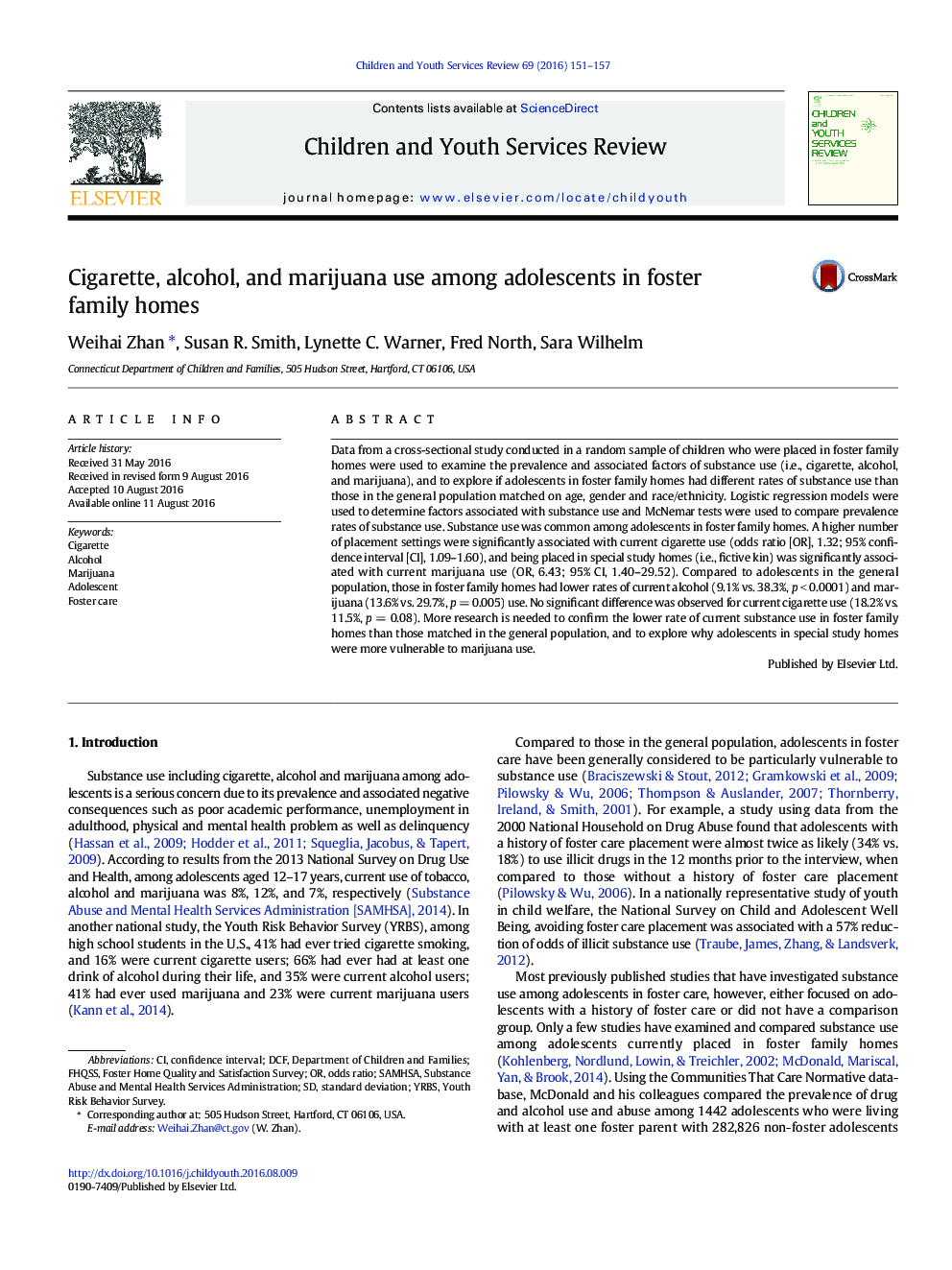| Article ID | Journal | Published Year | Pages | File Type |
|---|---|---|---|---|
| 6833656 | Children and Youth Services Review | 2016 | 7 Pages |
Abstract
Data from a cross-sectional study conducted in a random sample of children who were placed in foster family homes were used to examine the prevalence and associated factors of substance use (i.e., cigarette, alcohol, and marijuana), and to explore if adolescents in foster family homes had different rates of substance use than those in the general population matched on age, gender and race/ethnicity. Logistic regression models were used to determine factors associated with substance use and McNemar tests were used to compare prevalence rates of substance use. Substance use was common among adolescents in foster family homes. A higher number of placement settings were significantly associated with current cigarette use (odds ratio [OR], 1.32; 95% confidence interval [CI], 1.09-1.60), and being placed in special study homes (i.e., fictive kin) was significantly associated with current marijuana use (OR, 6.43; 95% CI, 1.40-29.52). Compared to adolescents in the general population, those in foster family homes had lower rates of current alcohol (9.1% vs. 38.3%, p < 0.0001) and marijuana (13.6% vs. 29.7%, p = 0.005) use. No significant difference was observed for current cigarette use (18.2% vs. 11.5%, p = 0.08). More research is needed to confirm the lower rate of current substance use in foster family homes than those matched in the general population, and to explore why adolescents in special study homes were more vulnerable to marijuana use.
Keywords
Related Topics
Health Sciences
Medicine and Dentistry
Perinatology, Pediatrics and Child Health
Authors
Weihai Zhan, Susan R. Smith, Lynette C. Warner, Fred North, Sara Wilhelm,
